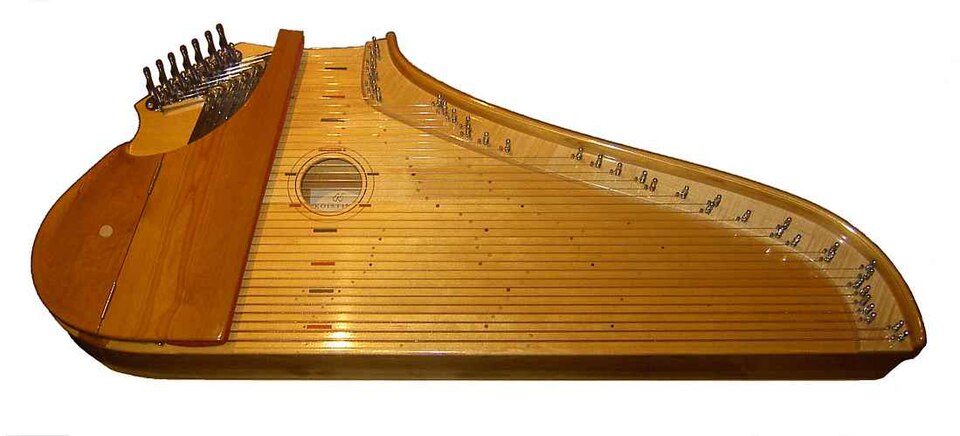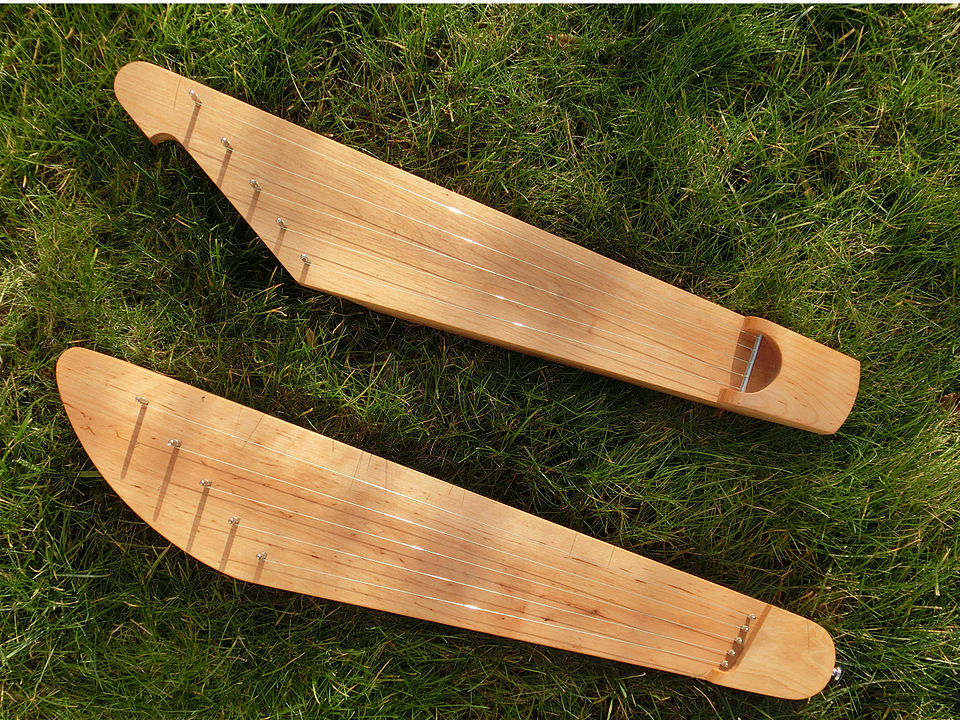Kantele – Finland’s Soul in String

Hidden among the mossy forests and shimmering lakes of Finland is a sound that seems to carry the very breath of the North, light, melancholic and mesmerizing. That sound comes from the kantele, a traditional Finnish string instrument with roots as deep and mysterious as the legends that surround it.
A Glimpse into Finnish Myth and Music ✨
The kantele is more than just an instrument; it’s a symbol. In the Finnish national epic, the Kalevala, the first kantele is said to be crafted by the wise hero Väinämöinen from the jawbone of a giant pike and a few strands of a maiden’s hair. When he played it, even the trees bent closer to listen. That mythical origin is a poetic hint at the kantele’s power, a bridge between nature, music, and myth.

Two five string kanteles by Melodia Soitin (2014). The shape of the upper kantele is more traditional, while the shape for the kantele below is slightly modernised – Creative Commons | Author: TheYellowFellow – Source: https://commons.wikimedia.org/wiki/File:Five_string_kanteles.jpg
What Exactly Is a Kantele? 🪕
At its core, the kantele is a type of zither. Traditional kanteles have 5 to 15 strings and are played on the lap or a table, using fingertips to pluck the strings. The modern concert kantele can have up to 38 strings and is equipped with levers or mechanisms that allow for chromatic playing, kind of like a harp meets a piano in folk attire.
Its sound is gentle, clear, and slightly haunting, like wind over water or a distant lullaby. It’s often used in Finnish folk music, but contemporary musicians have embraced it too, weaving its tones into jazz, pop, and even metal (because, yes, Finland).
Crafted by Nature 🌲
Traditionally, kanteles were made from a single piece of wood, usually birch or pine and strung with horsehair or brass. Today’s instruments still hold that connection to nature, often handcrafted by artisans who treat the process as both art and homage. Holding a kantele feels a bit like holding a part of the forest.
Why It Still Matters 🎵
Despite its ancient roots, the kantele is very much alive today. It’s taught in music schools across Finland, featured in cultural events, and even explored in international music circles. Artists like Vilma Timonen and Ida Elina have helped bring the instrument to new audiences, blending tradition with innovation.
In a world where so much music is loud and fast, the kantele offers a moment of pause — a reminder of simplicity, of nature, and of the quiet strength of heritage.

“The Kantele Player” by Pekka Halonen, 1892 – Source: https://commons.wikimedia.org/wiki/File:Kanteleensoittaja.jpg
The Sound of the Kantele 🌌
Whether you’re sitting by a lake under the northern lights or scrolling through a playlist in a city café, the sound of the kantele has the power to transport you. It’s a whisper from the past, a lullaby from the land of a thousand lakes, and a string-bound reminder that sometimes, the softest sounds are the most unforgettable.
References:
Wikipedia










